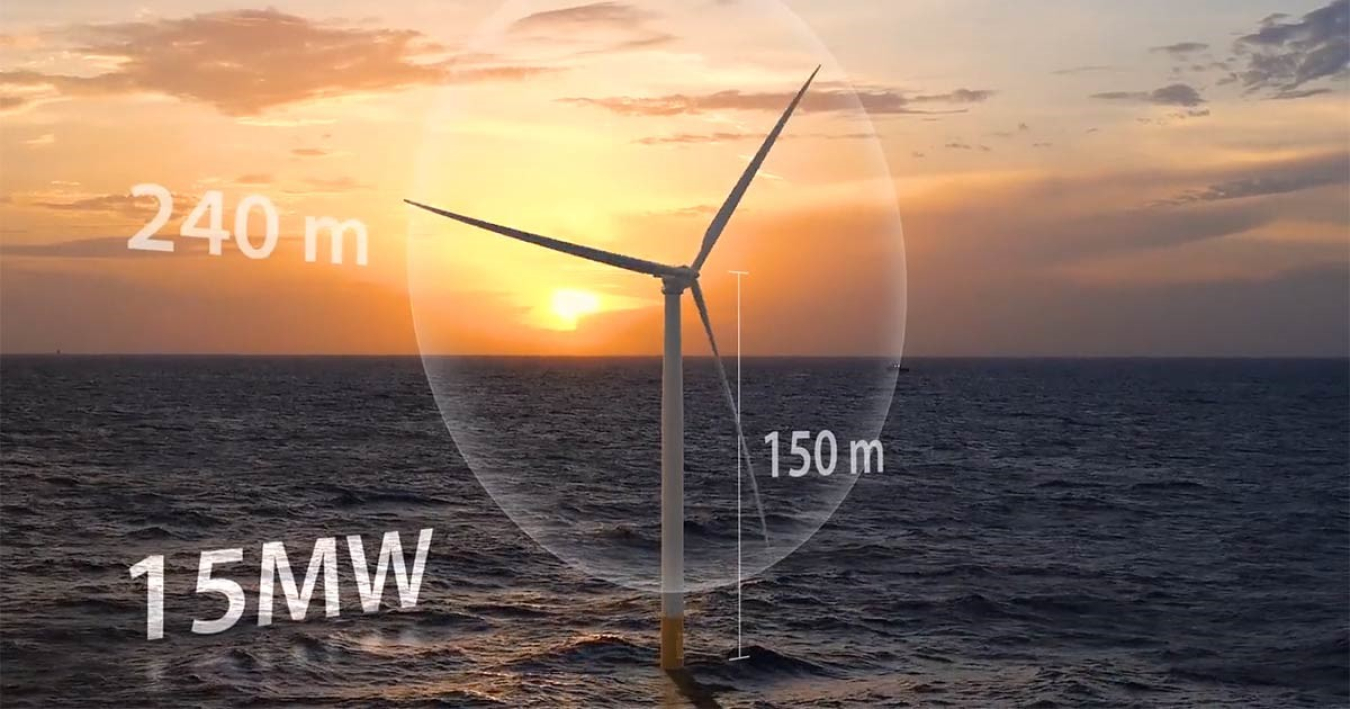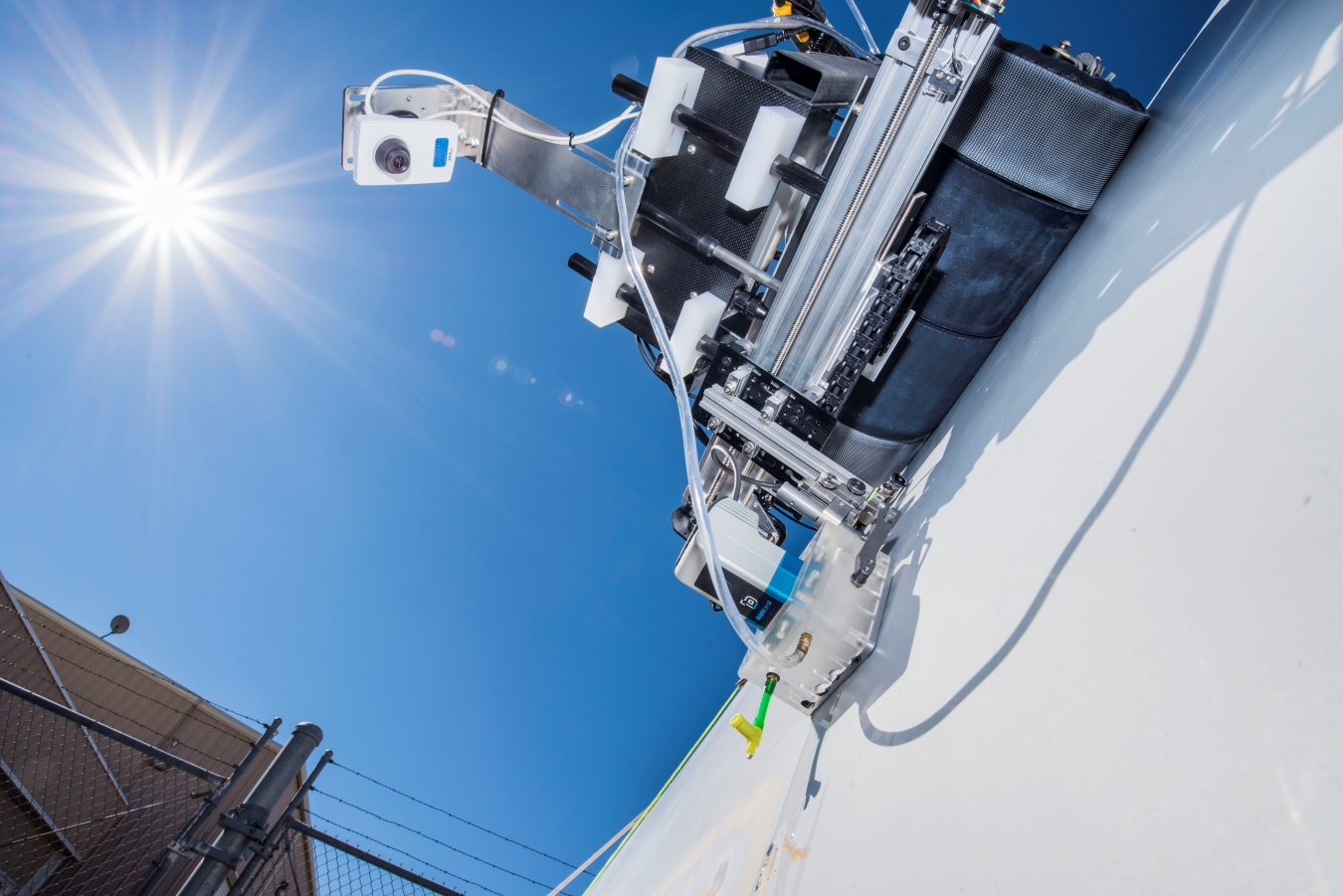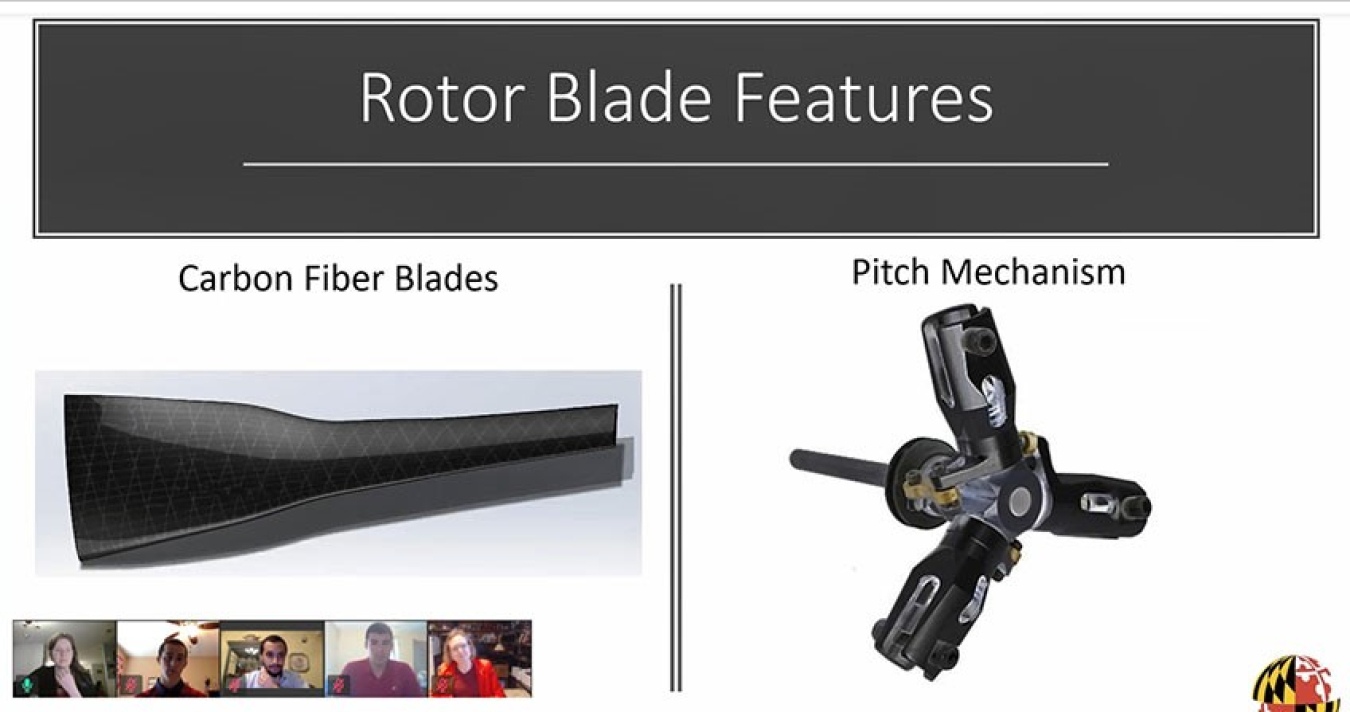As we celebrate American Wind Week, let’s look at some of WETO’s most exciting wind energy research this year.
Office of Critical Minerals and Energy Innovation
August 10, 2020In 2020, the U.S. Department of Energy Wind Energy Technologies Office (WETO) and DOE’s National Laboratories collaborated to protect wind power plants from cyberattacks, held the first virtual Collegiate Wind Competition, and developed robots that inspect wind turbine blades. And it’s only August! As we celebrate American Wind Week, let’s look at some of WETO’s most exciting wind energy research so far this year.
1. Researchers Demonstrate Wind Power Plants Can Help Maintain a Reliable Electricity System
As energy providers explore new ways to reliably integrate renewable energy sources into the electric grid, they can now look to wind plants to supply more than just power. With support from WETO, research collaborators from DOE’s National Renewable Energy Laboratory (NREL), Avangrid Renewables, the California Independent System Operator, and General Electric conducted a series of tests showing that wind technologies have the necessary capabilities to respond to the needs of the electric grid. The findings from these tests—performed in an active grid-operating environment over several days—will inform future research that explores how active power control capabilities for inverter-connected plants that combine wind, photovoltaic solar, and energy storage technologies could further accelerate the movement toward the electric grid of the future.
2. Offshore Wind Dreams Big with 15-MW Reference Wind Turbine
As the offshore wind industry grows and evolves, engineers and designers need tools that can help them develop better-performing, more cost-competitive wind turbines. With funding from WETO, NREL developed the International Energy Agency Wind Technology Collaboration Programme 15-megawatt (MW) reference turbine and released it in early 2020. The reference turbine features options for both fixed-bottom turbines and those with floating substructures and can accommodate multiple software tools. This open-source tool will help support cutting-edge wind energy research for years to come.

A new reference turbine, developed by NREL and funded by WETO, will provide industry, researchers, and academia with a public-domain tool for designing next-generation offshore wind turbines.
3. Crawling Robot Detects Damage to Save Wind Blades
Wind turbine blades are the largest single-piece composite structures in the world. They undergo hundreds of millions of fatigue cycles during their lifetime and are often located in remote areas, which makes it a challenge to monitor and ensure their reliability. As leader of the WETO-funded Blade Reliability Collaborative, Sandia National Laboratories teamed up with International Climbing Machines and Dolphitech to design, build, and validate the Assessment Robot for Resilient Optimized Wind energy (ARROW(e)). ARROW(e) is a crawling robot that conducts automated, full-penetration inspections of wind turbine blades using phased-array ultrasonics. Validation results demonstrated the robot’s ability to perform full-penetration inspections and detect subsurface damage through thick wind blade sections. In the near term, Sandia will work with potential private industry partners to begin moving the robot system toward routine use in the field. By catching damage before it becomes visible, crawling robots like ARROW(e) may help keep turbine repair costs down, allow blades to stay in service longer, and ensure wind blade reliability in the future.

A “crawler” robot moves along the blade and uses cameras to inspect surface damage and ultrasonic imaging to detect damage inside the blades.
4. The Collegiate Wind Competition Goes Virtual
Since launching in 2014, the U.S. Department of Energy Collegiate Wind Competition (CWC) has helped college students build the skills, knowledge, and industry connections they need to enter the wind industry workforce. However, participants in the 2020 competition had an experience unlike any other as a new era of social distancing required the CWC to move to a virtual format. The teams quickly adapted, using digital communication tools to stay connected to their teammates and presenting their work via webinar. In the face of unprecedented challenges, they demonstrated flexibility, resilience, and dedication—valuable qualities, no matter the industry.

The University of Maryland Wind TERPines present their turbine design via webinar during DOE’s 2020 Collegiate Wind Competition.
5. Labs Coordinate to Protect Wind Power from Cyberattacks
More than 50,000 wind turbines with a combined capacity of over 100 gigawatts operate in the United States, providing more than 7% of the nation’s electricity and creating a serious need to protect wind infrastructure from cyberattacks. With funding from WETO, researchers from the Idaho National Laboratory, NREL, Sandia, and Pacific Northwest National Laboratory are collaborating on research to make wind energy more secure. Their efforts include a strategy to guide future R&D investments in partnership with industry, a project to defend wind communication networks from cyberattacks, and a deployable 31-kilowatt wind/battery hybrid system that can be quickly installed without additional equipment or infrastructure. Together, these projects will allow National Laboratories and industry to conduct research and development and implement technologies in a way that safeguards wind energy now and in the future.
This week marks the first American Wind Week of a new decade. As we look back at some of our accomplishments from just the last eight months, it’s easy to see why wind power has become one of the largest sources of renewable electricity-generating capacity in the country. We look forward to continued innovation as wind powers our economy and energy system into a more sustainable future.

